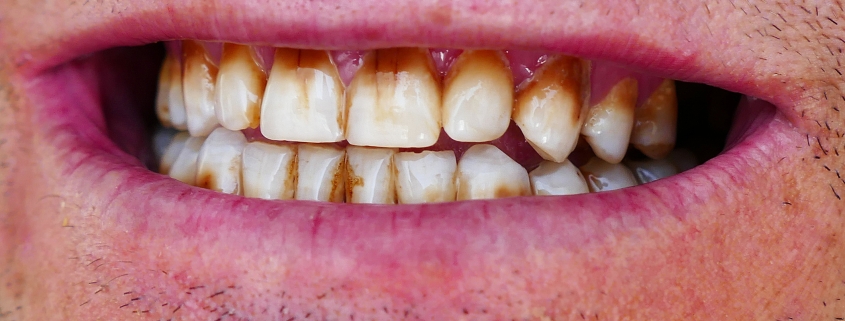Guide to Teeth Stains
Stains on teeth are a common concern for many people, affecting both appearance and confidence. While stains might seem like purely a cosmetic issue, they can also signal underlying oral health problems. Teeth stains come in different types, and their causes vary from lifestyle habits to genetic factors and even certain health conditions. The good news is that many of these stains can be treated or prevented with the right care and lifestyle adjustments.
In this article, we’ll explore the different types of teeth stains, their common causes, and the most effective treatments to achieve a brighter, healthier smile.
1. Types of Teeth Stains
Teeth stains can be categorized into three main types: extrinsic, intrinsic, and age-related. Each type has distinct characteristics and responds differently to treatment.
a. Extrinsic Stains
Extrinsic stains occur on the surface of the tooth, usually on the enamel. These stains are often caused by foods, drinks, or habits that leave a residue or pigment on the teeth.
- Common Causes: Coffee, tea, red wine, tobacco, and certain foods with dark colors (such as berries or soy sauce).
- Appearance: These stains typically appear as yellow or brown spots or as a general darkening of the enamel.
- Treatability: Extrinsic stains are generally easier to remove through professional cleaning or whitening toothpaste.
b. Intrinsic Stains
Intrinsic stains form within the inner layers of the tooth, particularly in the dentin, which is beneath the enamel. These stains are harder to remove because they’re embedded in the tooth structure.
- Common Causes: Certain medications (e.g., tetracycline), excessive fluoride exposure, trauma, and tooth decay.
- Appearance: Intrinsic stains are often grayish or brownish and may cover larger areas of the tooth.
- Treatability: These stains are more challenging to remove and may require in-office treatments like veneers, bonding, or professional whitening.
c. Age-Related Stains
Age-related stains are a combination of both extrinsic and intrinsic factors. As we age, our enamel wears down, revealing more of the yellowish dentin underneath. At the same time, years of exposure to staining substances can deepen any existing discoloration.
- Common Causes: Natural aging, combined with lifestyle factors like diet and oral hygiene.
- Appearance: Yellowish or grayish discoloration, often across most of the tooth surface.
- Treatability: Age-related stains may respond to professional whitening treatments, but in severe cases, restorative treatments may be needed.
2. Common Causes of Teeth Stains
a. Foods and Beverages
Certain foods and beverages contain pigments that stick to tooth enamel, leading to discoloration over time. The most common culprits include:
- Coffee and Tea: High in tannins, which can cause yellow or brown stains.
- Red Wine: Contains chromogens, compounds with intense color that easily adhere to enamel.
- Cola and Dark Sodas: These contain acids and dark colorings that can erode enamel and cause staining.
- Berries and Sauces: Berries, soy sauce, and similar foods have strong pigments that can stain teeth, especially if consumed frequently.
b. Tobacco Use
Both smoking and chewing tobacco can cause severe staining on the teeth. Tobacco contains tar and nicotine, which produce brown or yellow stains on tooth surfaces. These stains are challenging to remove with regular brushing and often require professional cleaning.
c. Poor Oral Hygiene
Inadequate brushing, flossing, and dental cleanings can lead to plaque buildup, which contributes to staining. Without regular hygiene practices, food particles, bacteria, and other substances can stick to teeth and cause discoloration over time.
d. Certain Medications
Some medications are known to cause intrinsic stains. For instance:
- Antibiotics (e.g., tetracycline and doxycycline): If taken during childhood or by a mother during pregnancy, these can cause grayish stains that penetrate the teeth.
- Antihistamines, Antipsychotics, and High Blood Pressure Medications: Certain drugs in these categories have been linked to tooth discoloration.
- Mouth Rinses with Chlorhexidine: This antiseptic ingredient can lead to staining if used regularly.
e. Fluorosis
Excessive fluoride exposure, especially during tooth development, can lead to a condition called fluorosis. This condition causes white or brownish spots on the teeth, depending on the severity. Fluorosis stains are typically intrinsic, affecting the internal tooth structure.
f. Trauma
Injuries to the teeth, particularly in childhood when teeth are still developing, can lead to discoloration. Trauma can damage the enamel or dentin, causing the tooth to turn gray or brown.

